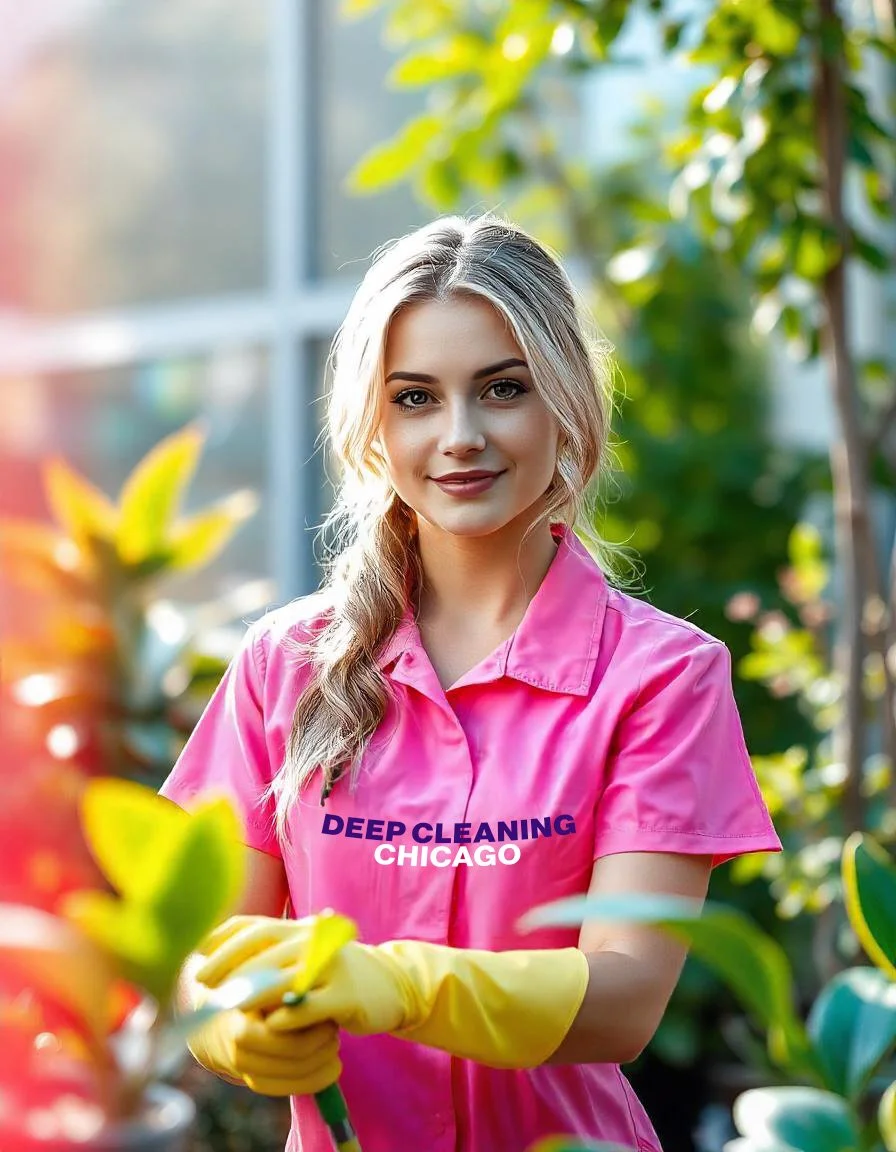Keep Your Home Clean With Simple Eco-Friendly Practices
Simplifying Eco-Friendly Cleaning For A Healthier Home
Improve Your Home With Eco-Friendly Practices
Cleaning your home and being considerate of the environment does not have to be challenging on its own. Eco-friendly cleaning will help you give your family a healthier home space and contribute to a greener planet. By making simple, easy changes, you'll be able to reduce your waste and save money while minimizing your contact with harmful chemicals—all while maintaining a spotless home.
Why Eco-Friendly Cleaning Makes Sense For Your Home And The Planet
Healthier Choices For A Safer Living Space
Most commercial cleaning products have harsh chemicals, affecting indoor air quality that might irritate the skin or respiratory system. The most simple and effective way of looking out for your health and your family's health is using cleaners' natural alternatives.
These would be effective eco-friendly cleaning solutions made either from plants or things that can easily degrade. In this way, it's assured that your house will remain a safe and healthy place for your family.
Reducing Your Environmental Impact Starts At Home
Traditional cleaning products can affect both your household and the environment. Most of them contain ingredients that can either pollute water systems or destroy ecosystems.
Switching to biodegradable or non-toxic alternatives can reduce pollution and take care of biodiversity. Whether big or small, everything you do will help create a sustainable future ahead.
Eco-Friendly Cleaning Does Not Have To Be So Pricey
Going green is expensive is a myth. Many eco-effective cleaning alternatives happen to be practical and affordable. Some everyday items can handle cleaning jobs like lemon juice, vinegar, and baking soda.
Depending on multi-purpose and natural products can save you money. It will cut down waste from single cleaners. This will simplify your cleaning and reduce clutter in your home.
Simple And Effective Green Cleaning Practices
1. Choose Biodegradable And Non-Toxic Products
Look for cleaning products labeled as biodegradable or plant-based. These will break down naturally and leave minimal impact on the environment. Choose brands that use renewable resources to further reduce your ecological footprint.
2. Clean More Effectively With Microfiber Tools
Other options include microfiber cloths and mops, which also works like disposable cleaning products. These reusable tools do an amazing job of gathering dirt and bacteria with water only, thus reducing or eliminating chemical cleaners. They are also cost-effective since they can be washed and reutilized multiple times.
3. Try Steam Cleaning For A Chemical-Free Approach
Steam cleaning is also an eco-friendly technique, as it makes use of only water heated at high temperatures to sanitize. It works very well in fast action for the removal of bacteria, allergens, and even molds without harsh chemicals.
This is an ideal method for families with children or pets since this procedure avoids the possibility of toxins exposure while keeping your home spotless.
4. Cut Down On Packaging Waste By Having More Concentrated Cleaning Solutions
Concentrated cleaners allow you to use less product for the same results. They take less packaging, which means fewer plastic bottles end up in landfill. Diluting these at home is a small yet impactful step toward reducing waste.
5. Invest In Sustainable Cleaning Tools
It would be nice to replace sponges or brushes with products produced from recycled or natural materials; brushes made of bamboo and compostable sponges are also a very good option. They can accomplish the same tasks as traditional utilities while causing less harm.
Easy DIY Eco-Friendly Cleaning Recipes To Give A Shot At Home
You do not need to buy over-the-top products to clean more efficiently. Here are a few very simple homemade solutions you can easily prepare within minutes:
All-Purpose Cleaner For Daily Surfaces
1 cup white vinegar
1 cup water
Optional: a few drops of essential oil, such as lemon or lavender.
Mix in a spray bottle, shake, and off you go. The basic stuff is excellent for dealing with countertops, and sinks, as well as general cleaning areas like tables, etc.
Light Baking Soda Scrub For Stubborn Stains
1 cup baking soda
½ cup water
Mix these into a paste and apply to surfaces needing to be scrubbed: tubs, sinks. Baking soda is a mild abrasive that removes stains without scuffing surfaces.
Glass Cleaner For A Streak-Free Shine
2 cups distilled water
¼ cup white vinegar
Optional: 1 teaspoon dish soap
Combine in a spray bottle, shake, and use with a microfiber cloth to clean windows and mirrors. The simple formula leaves streak-less sparkling results.
Simple Ways To Reduce Waste When Cleaning
1. Replace Paper Towels With Multi-Use Cloth.
Switching completely to microfiber or other reusable cloth replaces can be the easiest manner of waste reduction. This can be washed with water and reused many times, making them perfect for practicality and more sensitive to nature compared to simple paper towels.
2. Save Water While Cleaning.
Be mindful of water use by turning off the tap while scrubbing or rinsing. For floors, consider using a damp mop instead of a bucket of water. These small habits can collectively make a big difference in conserving this important resource.
3. Choose Eco-Friendly Laundry Detergents.
Most commercial detergents contain phosphates and artificial fragrances, which can cause harm to the environment. Choose biodegradable detergents that do not have harsh chemicals in them. They'll clean your clothes while helping to minimize water pollution.
Making Eco-Friendly Cleaning Part Of Your Lifestyle
Eco-friendly cleaning is more than using greener products; it's a behavior that shows your concern for the planet in every single aspect of your life. You can keep your home spotless without giving up any of your values by using natural ingredients, investing in reusable tools, and keeping track of your waste.
You're not only giving yourself and your loved ones a safer space, but you are contributing to a greener planet for future generations. These tips and methods, no matter how small, can lead to long-lasting positive change.
Everything You Need to Know About Cleaning and Home Care
From Quick Daily Fixes to Full Deep Clean Guides, All in One Place
House Cleaning Made Simple With These Must-Know Tips
The Smart Way to Deep Clean Your Home and Save Money
How to Deep Clean Your Home One Room at a Time
New Year’s Eve Cleaning Superstitions and Facts
Street Cleaning Efforts That Make a Big Impact
Simple Ways to Cleanse Negative Vibes From Your Space
The Truth Behind the Egg Ritual for Aura Cleansing
Cleaning Routines Designed for Your Busy Life
Can Rain Really Help Clean City Streets
How an Egg Cleanse May Affect You Spiritually and Physically
Time-Saving House Cleaning Tips That Actually Work
Daily Cleaning Habits That Keep Your Home Looking Great
Why Cleaning Your Home May Help You Sleep Better
The Mental Health Benefits of a Clean and Clutter-Free Space
How Quezon City Measures Up in Cleanliness
Is the Philippines Taking Steps Toward a Cleaner Future
How to Maintain a Clean Home Without Harsh Chemicals
Keep Your Home Sparkling All Year With These Simple Tricks
What’s the Difference Between Spring Cleaning and Deep Cleaning
The Benefits of Regular Strata Cleaning for Property Management
Why Disinfecting High-Touch Surfaces Is Key to a Healthy Home
How Deep Cleaning Improves Your Health and Home Environment
The Link Between Deep Cleaning and Fewer Allergy Symptoms
Why Cleaning Can Help You Feel Calmer and Happier
The Best Way to Keep Your Home Clean Week After Week
Everything You Need to Know About Spring Cleaning



